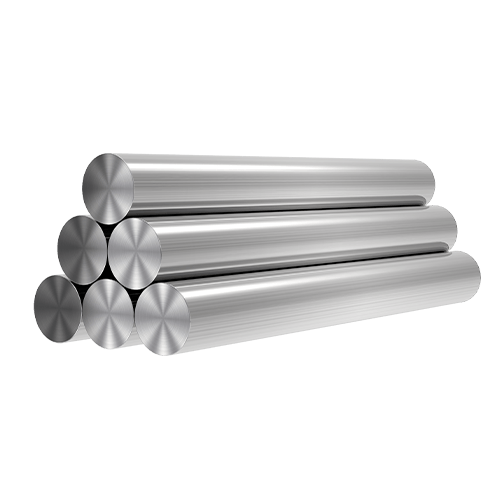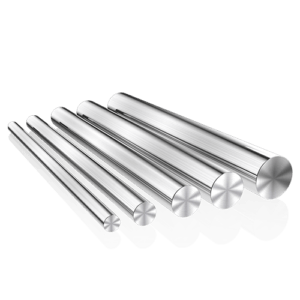Introduction

When it comes to selecting materials for food-related applications, the choice of stainless steel is crucial. Among the various types of stainless steel, Food Grade 304 Stainless Steel stands out as a top choice due to its excellent properties and versatility. This comprehensive guide will explore what Food Grade 304 Stainless Steel is, its advantages, common applications, and answer some frequently asked questions.
What is Food Grade 304 Stainless Steel?
Food Grade 304 Stainless Steel, also known as Type 304, is a high-quality stainless steel that is commonly used in food processing and preparation due to its corrosion resistance, durability, and hygienic properties. This type of stainless steel contains 18% chromium and 8% nickel, which contributes to its strength and resistance to oxidation.
Composition and Properties
The specific chemical composition of Food Grade 304 Stainless Steel is:
- Chromium (Cr): 18%
- Nickel (Ni): 8%
- Carbon (C): ≤0.08%
- Manganese (Mn): ≤2%
- Silicon (Si): ≤1%
- Phosphorus (P): ≤0.045%
- Sulfur (S): ≤0.03%
This composition provides a balance of corrosion resistance, strength, and workability.
Key Properties
- Corrosion Resistance: Excellent resistance to oxidation and corrosion.
- Durability: High tensile strength and resistance to wear and tear.
- Hygiene: Non-porous surface prevents bacterial growth.
- Temperature Tolerance: Performs well in both high and low-temperature environments.
Advantages of Food Grade 304 Stainless Steel
Superior Corrosion Resistance
Food Grade 304 Stainless Steel’s chromium content provides excellent resistance to various acids and alkaline solutions. This makes it ideal for use in environments where the material is exposed to moisture or food acids, ensuring longevity and reducing the risk of contamination.
High Durability and Strength
The nickel content in 304 Stainless Steel enhances its mechanical properties, offering high tensile strength. This makes it suitable for heavy-duty applications, including commercial kitchens and industrial food processing equipment.
Hygienic and Easy to Clean
The smooth, non-porous surface of 304 Stainless Steel makes it easy to clean and sanitize, which is essential in preventing the growth of bacteria and ensuring food safety. This is particularly important in food preparation and processing environments.
Aesthetic Appeal
Food Grade 304 Stainless Steel has a bright, attractive finish that maintains its appearance over time. It is often used in visible areas where aesthetics are important, such as kitchen appliances and countertops.
Temperature Resistance
This stainless steel type can withstand both high and low temperatures without losing its structural integrity. It is often used in applications where temperature fluctuations are common, such as in ovens and refrigeration units.
Common Applications of Food Grade 304 Stainless Steel
304 Stainless Steel is widely used in various applications due to its beneficial properties. Some common uses include:
- Kitchen Appliances: Includes refrigerators, dishwashers, and ovens.
- Food Processing Equipment: Such as mixers, blenders, and cooking vessels.
- Food Storage Containers: Sinks, countertops, and storage tanks.
- Medical Devices: Instruments and tools requiring stringent hygiene standards.
Comparison of Stainless Steel Types
| Property | 304 Stainless Steel | 316 Stainless Steel | 201 Stainless Steel |
|---|---|---|---|
| Chromium Content | 18% | 16% | 16% |
| Nickel Content | 8% | 10% | 3.5% |
| Corrosion Resistance | High | Very High | Moderate |
| Temperature Resistance | High | Higher | Moderate |
| Typical Applications | Kitchen Appliances | Marine Equipment | Budget Applications |
| Cost | Moderate | Higher | Lower |
Maintenance and Care

Regular Cleaning
To maintain the appearance and functionality of Food Grade 304 Stainless Steel, it is important to clean it regularly. Use mild detergents and non-abrasive sponges to avoid scratching the surface. For tough stains, a solution of baking soda and water can be effective.
Avoiding Harsh Chemicals
While Food Grade 304 Stainless Steel is resistant to many chemicals, it is best to avoid using harsh or abrasive chemicals that could damage the surface. Stick to pH-neutral cleaners and avoid chlorine-based products.
Addressing Scratches and Dents
Minor scratches can be polished out using a stainless steel polish. For deeper scratches or dents, professional refinishing may be required to restore the surface to its original condition.
Conclusion
Food Grade 304 Stainless Steel is an excellent choice for a variety of food-related applications due to its superior corrosion resistance, durability, and hygienic properties. Whether used in kitchen appliances, food processing equipment, or storage containers, its benefits make it a preferred material in the food industry. Understanding its properties and proper maintenance can help ensure it remains a reliable and attractive choice for many years to come.
FAQ
Q:What is the difference between Food Grade 304 Stainless Steel and 316 Stainless Steel?
A:Food Grade 316 Stainless Steel contains molybdenum, which offers even greater resistance to corrosion, particularly in marine or chloride-rich environments. However, 316 Stainless Steel is generally more expensive than 304 Stainless Steel.
Q:Can 304 Stainless Steel be used in outdoor environments?
A:Yes, 304 Stainless Steel can be used outdoors, but it may require more maintenance to prevent surface discoloration or corrosion due to environmental factors. For harsher outdoor conditions, 316 Stainless Steel may be a better choice.
Q:Is Food Grade 304 Stainless Steel magnetic?
A:Food Grade 304 Stainless Steel is generally non-magnetic in its annealed state. However, it can exhibit some magnetic properties when cold-worked.
Q:How do I know if a stainless steel product is Food Grade 304?
A:Food Grade 304 Stainless Steel products are often labeled or stamped with their grade. You can also request certification from the manufacturer or supplier to ensure that the material meets Food Grade standards.
Q:Can Food Grade 304 Stainless Steel be welded?
A:Yes, Food Grade 304 Stainless Steel can be welded. It is important to use the appropriate welding techniques and filler materials to maintain its corrosion resistance and structural integrity.
Q:How should I store Food Grade 304 Stainless Steel to prevent damage?
A:Store Food Grade 304 Stainless Steel in a dry, clean environment to prevent exposure to corrosive elements. Avoid stacking or placing heavy items on the stainless steel surface to prevent physical damage.
Q:What are some alternatives to Food Grade 304 Stainless Steel?
A:Alternatives to Food Grade 304 Stainless Steel include 316 Stainless Steel for higher corrosion resistance, and aluminum for lightweight applications. The choice of material depends on the specific requirements of the application.
